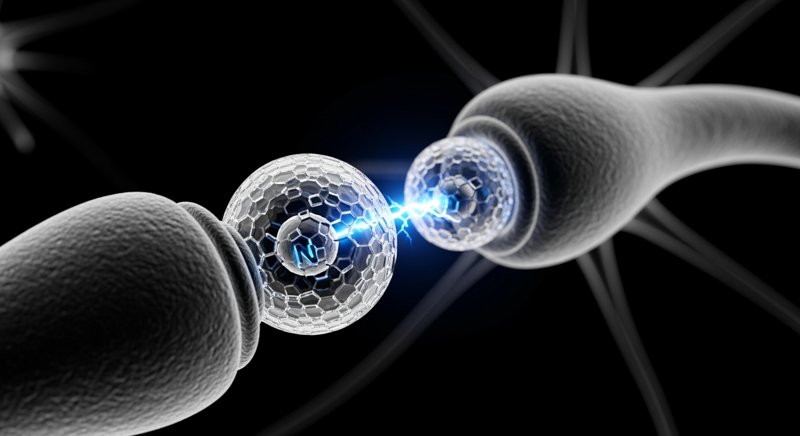🔬 The Salt Paradox: Navigating the Science Behind the World's Most Contentious Mineral

Salt. No single substance in our diet is so essential and yet so vilified. It’s a source of endless debate, a staple of every kitchen, and a cornerstone of the modern food industry. We are told it’s the “white death,” a primary driver of high blood pressure and heart disease. Yet, our bodies cannot function without it.
So, what is the truth? To navigate this “salt paradox,” we must move beyond the headlines and into the realm of biochemistry and evidence-based science. Let’s dissect the myths, understand the mechanisms, and create a rational framework for salt in a healthy diet.
Part 1: The Indispensable Mineral: Why Your Body Craves Salt
Before we discuss the risks, let’s be clear: a salt-free diet is a fatal one. Table salt, or sodium chloride (NaCl), is the primary source of two electrolytes that are fundamental to life.
- Sodium (Na+): This is the master regulator of fluid balance in our bodies, governing the movement of water in and out of every cell. More importantly, it’s the spark of life for our nervous system. Every nerve impulse, every muscle contraction, every thought is powered by the exchange of sodium ions across cell membranes. Without sodium, there is no electrical activity in the body.
- Chloride (Cl-): This is a key component of stomach acid (hydrochloric acid), which is essential for digesting food and protecting us from foodborne pathogens.
The idea that salt is an unnatural poison is a modern misconception. It is a vital nutrient that our bodies are exquisitely designed to manage.
Part 2: The Dose Makes the Poison: How Excess Salt Becomes a Problem
If salt is so essential, why is the World Health Organization (WHO) leading a global charge to reduce sodium intake? The answer lies in a simple biological principle: where sodium goes, water follows.
When you consume an excess of salt, your body retains water to dilute the high concentration of sodium in your bloodstream. This increases the total volume of blood circulating in your vessels. Imagine a plumbing system suddenly forced to handle 20% more fluid—the pressure inside the pipes would skyrocket.
This is precisely what happens in your arteries. The increased blood volume pushes harder against the vessel walls, leading to hypertension, or high blood pressure. Over time, this relentless pressure damages the delicate lining of the arteries, accelerates atherosclerosis (the buildup of plaque), and forces the heart to work harder, leading to an increased risk of heart attack, stroke, and kidney disease.
The WHO’s recommendation is to consume less than 5 grams of salt (about 2,000 mg of sodium) per day. The tragic reality is that the global average intake is more than double that amount.
Part 3: The Hidden Enemy: Where is All This Salt Coming From?
The primary culprit is not the salt shaker on your table. Up to 80% of the salt we consume is “hidden” in processed and packaged foods. The food industry uses salt liberally, not just for flavor, but as a preservative and a processing aid.
Top offenders include:
- Processed Meats: Sausages, bacon, deli meats.
- Bread and Baked Goods: Salt is a key ingredient in most commercial breads.
- Canned Goods and Soups.
- Cheese.
- Sauces and Condiments: A single tablespoon of soy sauce can contain half your daily sodium limit.
This is the heart of the problem. Our taste buds have been conditioned by an artificially high-salt food environment, and we are often unaware of the true sodium content of our meals.
Part 4: Deconstructing the Salt Myths
Myth #1: Pink Himalayan / Sea Salt / Black Salt is “Healthier”
This is one of the most successful marketing myths in nutrition. While these artisanal salts may contain trace amounts of other minerals, they are still 97-99% sodium chloride. The health impact is identical to that of regular table salt. The choice should be based on taste and texture, not on unsubstantiated health claims.
Myth #2: The Salt-Sensitivity Spectrum
The impact of salt on blood pressure is not uniform. There is a spectrum of salt sensitivity, and it’s influenced by genetics, age, and ethnicity. Some individuals can consume higher amounts of salt with little effect on their blood pressure, while others are highly sensitive, and even a small excess can cause a significant spike. As we age, our ability to efficiently excrete sodium declines, meaning most of us become more salt-sensitive over time.
Myth #3: The Potassium-Sodium Balance
The story of salt is incomplete without its counterpart: potassium. These two minerals work in a delicate balance. While sodium raises blood pressure, potassium helps to lower it by relaxing blood vessels and promoting sodium excretion. The modern processed diet is not just high in sodium; it’s also tragically low in potassium (found in fruits, vegetables, and legumes). Restoring this balance, by both reducing sodium and increasing potassium intake, is a powerful strategy for cardiovascular health.
A Rational Path Forward
The goal is not to eliminate salt, but to regain control over our consumption.
- Cook at Home: This is the single most effective way to manage your salt intake.
- Read the Labels: Become a detective. Pay attention to the sodium content on nutrition labels.
- Flavor with Nature: Explore the vast world of herbs, spices, citrus, garlic, and onions to season your food.
- Prioritize Potassium: Build your diet around potassium-rich whole foods like leafy greens, bananas, avocados, and beans.
- Taste First: Break the habit of automatically salting your food before you’ve even tasted it.
Salt is neither a simple friend nor a straightforward foe. It is a vital nutrient that becomes a slow-acting poison in the face of the chronic, hidden excess that defines the modern diet. By understanding the science and taking conscious control of our food choices, we can restore a healthy balance and transform our relationship with this ancient, essential, and powerful mineral.




